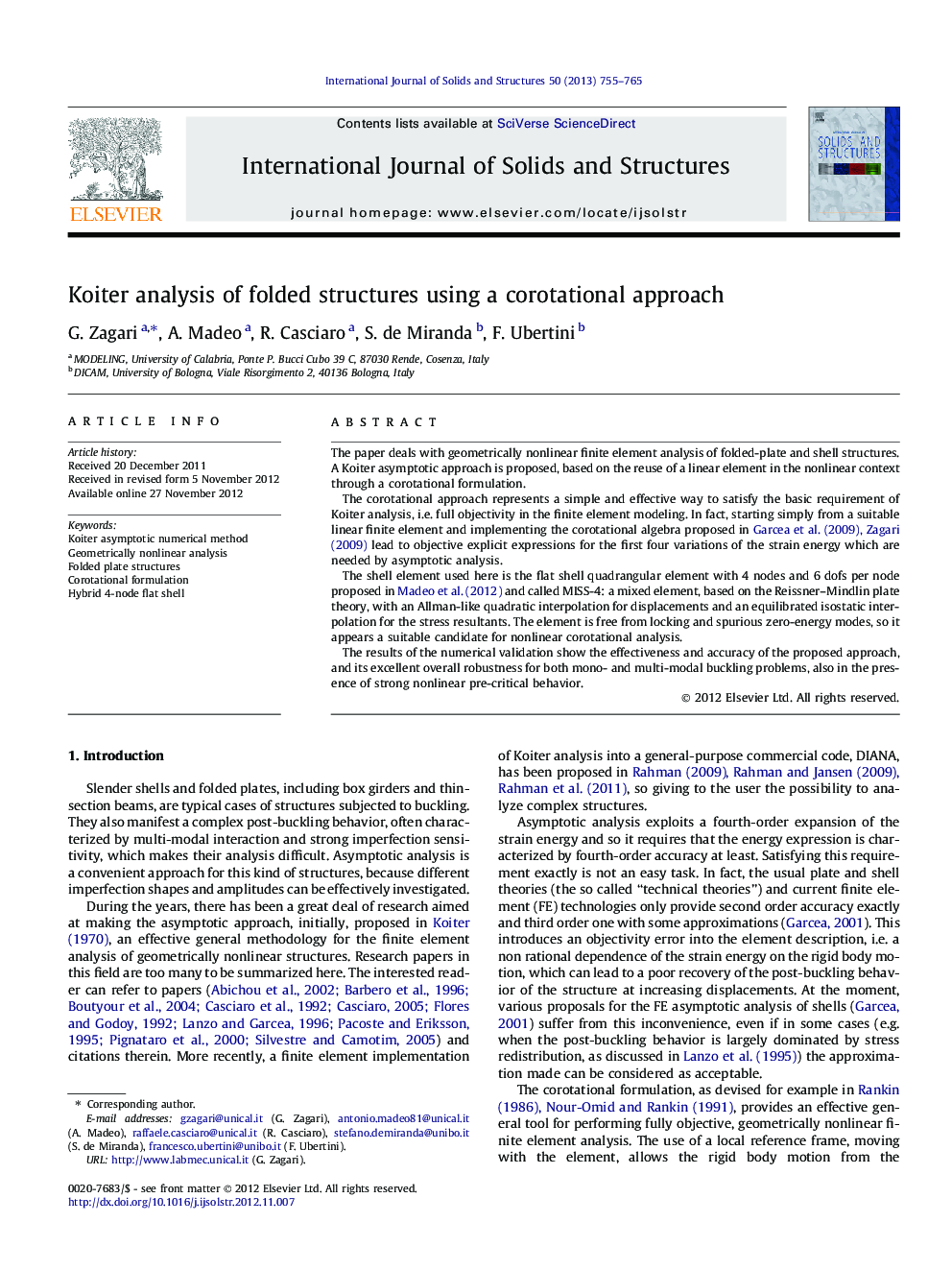| Article ID | Journal | Published Year | Pages | File Type |
|---|---|---|---|---|
| 278063 | International Journal of Solids and Structures | 2013 | 11 Pages |
The paper deals with geometrically nonlinear finite element analysis of folded-plate and shell structures. A Koiter asymptotic approach is proposed, based on the reuse of a linear element in the nonlinear context through a corotational formulation.The corotational approach represents a simple and effective way to satisfy the basic requirement of Koiter analysis, i.e. full objectivity in the finite element modeling. In fact, starting simply from a suitable linear finite element and implementing the corotational algebra proposed in Garcea et al., 2009 and Zagari, 2009 lead to objective explicit expressions for the first four variations of the strain energy which are needed by asymptotic analysis.The shell element used here is the flat shell quadrangular element with 4 nodes and 6 dofs per node proposed in Madeo et al. (2012) and called MISS-4: a mixed element, based on the Reissner–Mindlin plate theory, with an Allman-like quadratic interpolation for displacements and an equilibrated isostatic interpolation for the stress resultants. The element is free from locking and spurious zero-energy modes, so it appears a suitable candidate for nonlinear corotational analysis.The results of the numerical validation show the effectiveness and accuracy of the proposed approach, and its excellent overall robustness for both mono- and multi-modal buckling problems, also in the presence of strong nonlinear pre-critical behavior.
► A Koiter asymptotic FEM analysis of folded plate structures is proposed. ► A corotational approach is used to guarantee objectivity and to evaluate easily energy variations. ► High performance linear hybrid stress shell elements are reused in nonlinear context. ► The geometrically nonlinear analysis involves finite 3D rotations. ► The results are accurate and the method is reliable and robust.
